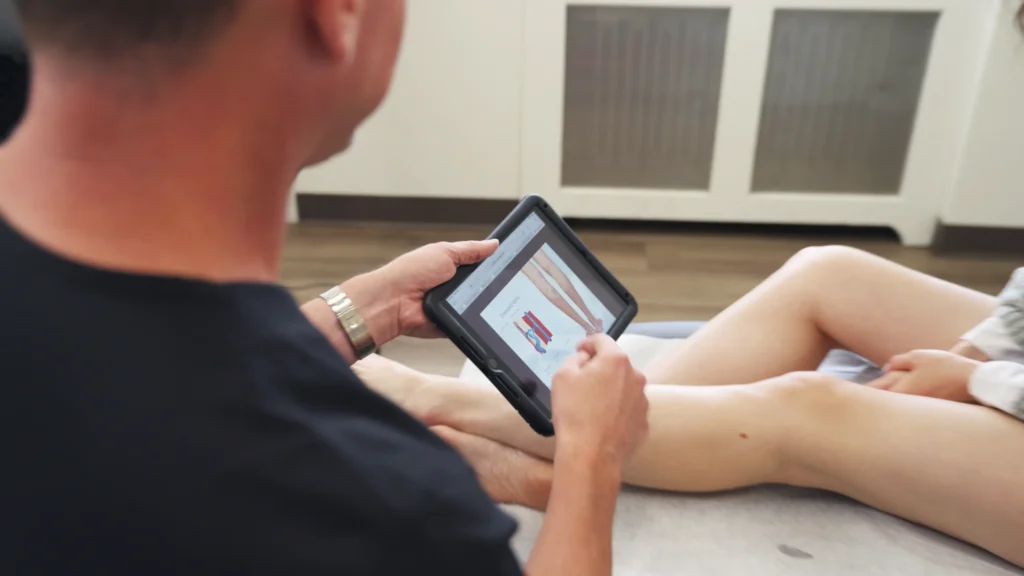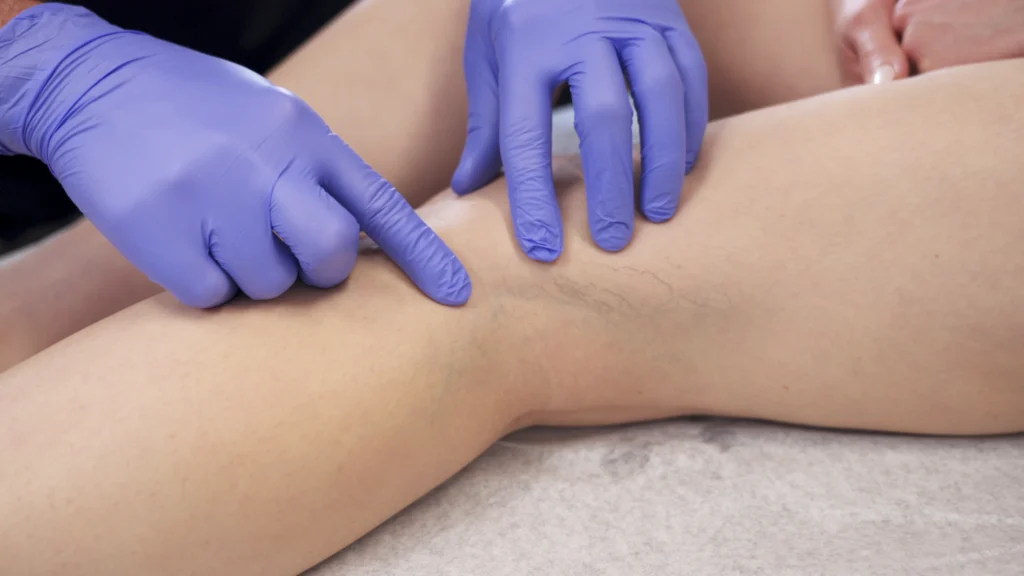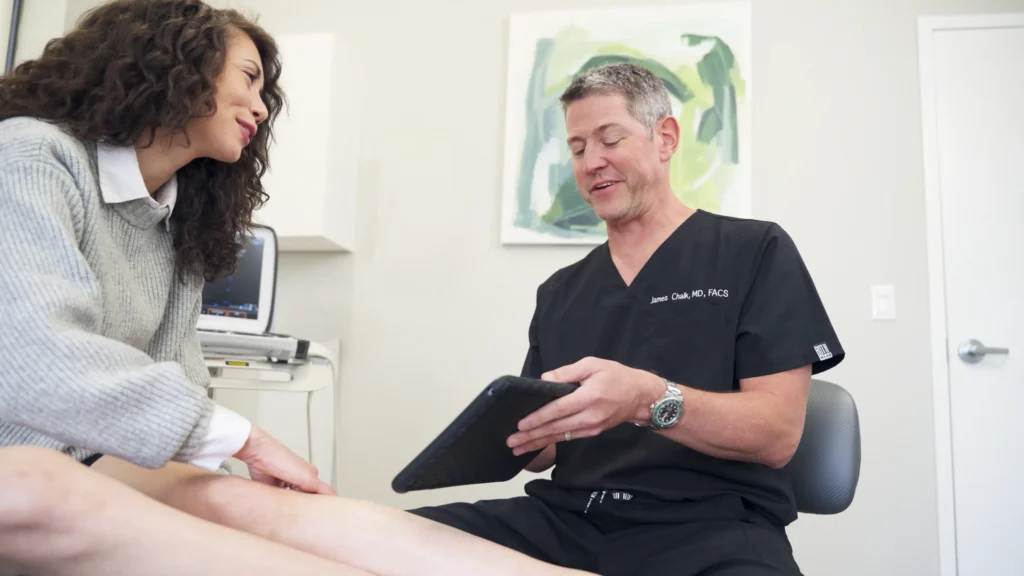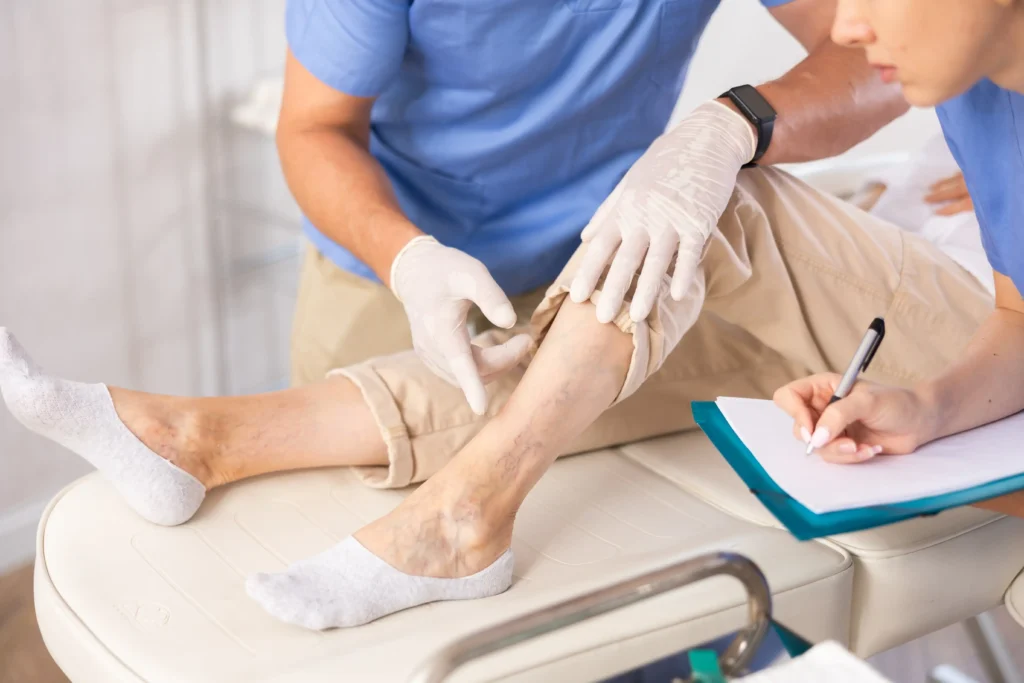Is Sclerotherapy Covered by Insurance? Find Out Today!
You’ve been noticing spider veins on your legs. At first, they were just a few lines, but they gradually spread, leaving you feeling self-conscious about showing your legs. You may also experience varicose vein pain. You decide it’s time to seek help, not just for the appearance but because you’ve also been feeling a strange heaviness and discomfort in your legs by the end of the day. After some research, you come across sclerotherapy as an effective treatment for spider veins, but you’re left wondering, Is sclerotherapy covered by insurance?
In this guide, we’ll cover everything you need to know about insurance coverage for sclerotherapy and other minimally invasive vein treatments. At Vein Treatment, we understand the importance of clear answers so you can focus on the benefits of spider vein treatment without worrying about unexpected costs. Read on to learn if insurance might cover your vein treatment and how our board-certified vein doctors can help.
Is Sclerotherapy Covered by Insurance? It Depends!
When it comes to “is sclerotherapy covered by insurance,” the answer depends on several factors. Insurance companies generally cover vein treatments deemed “medically necessary.” If your vein doctor finds that you have an underlying condition like chronic venous insufficiency—a common cause of varicose veins and related symptoms—insurance may cover sclerotherapy and other minimally invasive vein treatments. However, if your treatment is primarily for cosmetic purposes, like addressing superficial spider veins, insurance is unlikely to cover it.
The best way to determine if your sclerotherapy is covered is through a duplex ultrasound, a diagnostic test that helps vein specialists understand the root cause of your vein issues. At Vein Treatment in New York, Long Island, California, Maryland, and New Jersey, we offer free insurance verification before your appointment at our vein clinics.
Factors That Determine Insurance Coverage for Vein Treatments
Several factors influence whether or not your vein treatments, including sclerotherapy, are covered by insurance. Here’s a breakdown of some common factors:
1. Underlying Venous Insufficiency
One of the most significant determinants is whether you have underlying venous insufficiency. Venous insufficiency is when valves in the veins fail, causing blood to pool and leading to varicose veins. Insurance often covers treatments for venous insufficiency, as it’s a medical condition rather than a cosmetic issue. If venous insufficiency is present, treatments like sclerotherapy and radiofrequency ablation may be covered.
2. Type of Vein Treatment Needed
Different vein treatments are available, each with varying levels of insurance coverage:
- Sclerotherapy: Frequently covered when linked to venous insufficiency but not typically covered just for spider veins without underlying vein disease.
- Endovenous Laser Ablation (EVLA): A minimally invasive treatment that is often covered if varicose veins or venous insufficiency is diagnosed.
- Radiofrequency Ablation (RFA): Another effective treatment for vein issues, covered when medically necessary due to the presence of varicose veins or venous insufficiency.
- VenaSeal and ClariVein: These are advanced minimally invasive vein treatments that may be covered based on your insurer’s policies and your specific diagnosis.
3. Severity of Symptoms
The severity and type of symptoms also play a role in coverage:
- Common symptoms and signs of venous insufficiency, like leg heaviness, pain, swelling, and skin discoloration, often indicate a medical necessity for vein treatment.
- Cosmetic issues, such as spider veins without accompanying symptoms, are rarely covered.
4. Insurance Provider and Plan Specifications
Each insurance provider has its own criteria for covering vein treatments: Coverage policies differ, with some plans covering more advanced procedures than others. Contact us to schedule a consultation so we can help you navigate your insurance options and understand your policy.
Why Minimally Invasive Vein Treatments are Better than Varicose Veins Surgery
When it comes to treating venous issues, minimally invasive vein treatments are preferred over traditional varicose veins surgery. Here’s why:
- Less downtime and quicker recovery
- Fewer risks compared to surgery
- Can be performed in an outpatient setting
- Minimal scarring
- Little to no anesthesia required
- Effective at treating the root cause of symptoms
- High success rates and patient satisfaction
At our vein treatment clinics, we specialize in these minimally invasive spider vein and varicose veins treatments and provide effective and comfortable solutions for our patients.
FAQs
How to prevent varicose veins?
How to prevent varicose veins? While not all cases are preventable, you can reduce your risk:
- Exercise regularly to improve circulation.
- Avoid prolonged standing or sitting.
- Elevate your legs when resting.
- Maintain a healthy weight.
What is the best treatment for varicose veins?
What is the best treatment for varicose veins? The best treatment depends on your diagnosis, but minimally invasive procedures like sclerotherapy, endovenous laser ablation, and VenaSeal are often preferred. Visit your nearest vein center to learn more about your minimally invasive varicose vein treatment options.
What is venous insufficiency?
What is venous insufficiency? Venous insufficiency occurs when vein valves fail, which causes blood to pool in the veins, leading to varicose veins. This can result in pain, swelling, and skin changes.
How to treat varicose veins?
How to treat varicose veins? Varicose vein treatment depends on your condition, but some of the most effective minimally invasive vein treatments include radiofrequency ablation and endovenous laser ablation. Sclerotherapy or ambulatory phlebectomy may be used to remove spider veins or superficial varicose veins. Contact us to schedule a consultation and explore your minimally invasive varicose vein treatment options.
Spider veins vs. varicose veins: What’s the difference?
Spider veins vs. varicose veins: What’s the difference? Spider veins are small, web-like clusters of veins near the skin surface, usually cosmetic, but may be linked to underlying issues. Varicose veins are enlarged, twisted veins caused by venous insufficiency. They are usually more severe, with symptoms like pain, heaviness, and swelling.
How much does sclerotherapy cost?
How much does sclerotherapy cost? Sclerotherapy costs can vary:
- Treatments for spider veins without underlying vein problems are often not covered and can range from $300 to $500 per session.
- Sclerotherapy for spider veins caused by venous insufficiency may be partially or fully covered by insurance.
What are the signs of venous insufficiency?
Common signs of venous insufficiency include:
- Leg pain, heaviness, or aching
- Swelling, especially around the ankles
- Visible varicose veins or spider veins
- Skin discoloration or ulceration
Is sclerotherapy covered by insurance? It depends on several factors, such as whether the treatment is medically necessary. Many of our minimally invasive vein treatments are covered when there’s an underlying diagnosis of chronic venous insufficiency. At Vein Treatment, we are committed to offering personalized, affordable options at our conveniently located vein clinics in New York, New Jersey, Long Island, California, and Maryland. Contact us for free insurance verification, or visit your nearest vein clinic to begin your journey to healthier veins.








